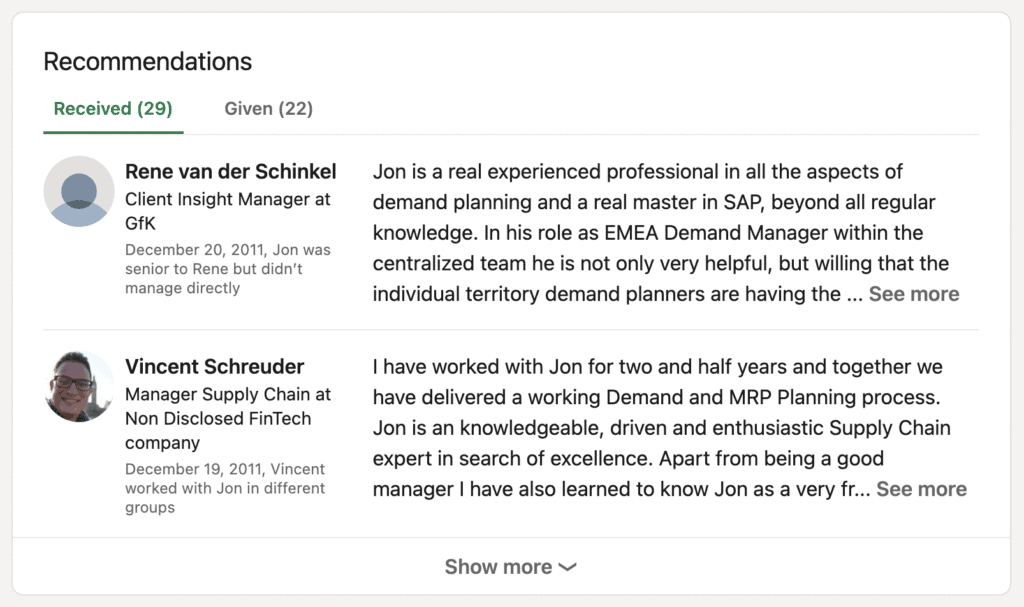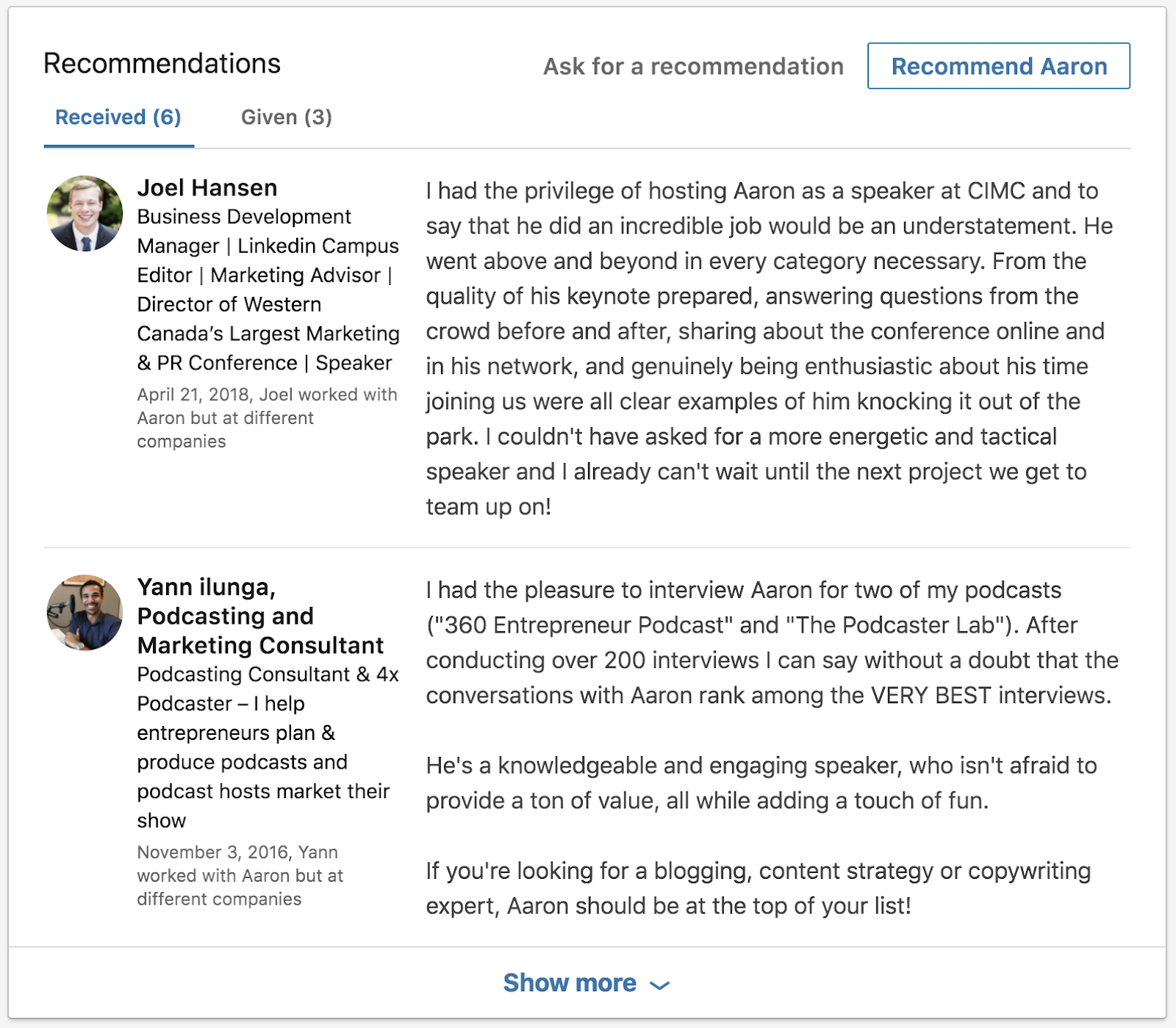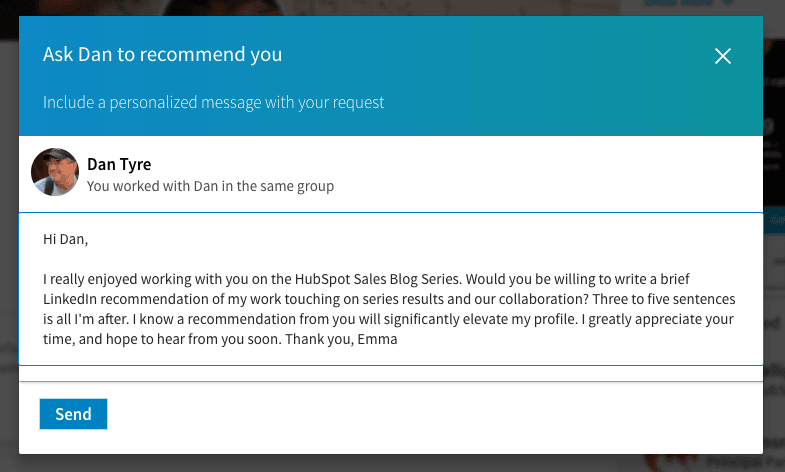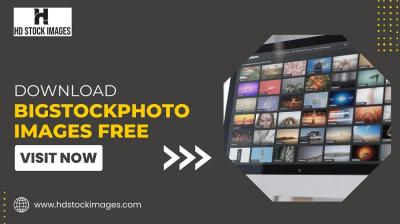In today's competitive job market, standing out can be quite a challenge. One of the most effective strategies is leveraging your network for referrals. But how do you approach this? In this post, we’ll explore the importance of referrals and how to prepare your LinkedIn profile for success.
Understanding the Importance of Referrals in Job Applications

Have you ever heard the phrase, "It's not what you know, but who you know"? While knowledge and skills are crucial, referrals can significantly enhance your job application. Here’s why:
- Higher Chances of Getting Noticed: Recruiters often prioritize referrals, as they come with a level of trust. For instance, a study by Jobvite shows that referred candidates are 55% more likely to land an interview.
- Insider Insights: When you get a referral, you often gain insights about the company culture and the specific job role. Your contact can provide tips on what the hiring manager is looking for, giving you a competitive edge.
- Stronger Connection: A referral creates an initial connection between you and the company, making it easier for you to step into the spotlight during the hiring process.
- Quicker Hiring Process: Referrals can speed up the hiring process. Companies trust referrals more, meaning you could move through the hiring stages more quickly than non-referred candidates.
Overall, referrals are like a secret weapon in your job search arsenal. They not only enhance your visibility but also build a bridge of trust with potential employers. So, if you're not actively seeking referrals, you're missing out on a significant advantage!
Also Read This: How to Post a Link on LinkedIn as a Beginner
Preparing Your LinkedIn Profile for Referral Requests

Before reaching out for referrals, it’s essential to ensure your LinkedIn profile is polished and professional. Here’s how to get it ready:
- Professional Photo: Your profile picture should be clear, approachable, and professional. A warm smile goes a long way in making a great first impression.
- Compelling Headline: Use your headline to showcase your career aspirations or expertise. Instead of just stating your job title, consider something like, "Aspiring Digital Marketing Specialist | Social Media Enthusiast | Content Creator."
- Engaging Summary: Write a summary that tells your professional story. Highlight your skills, experiences, and what you’re looking for in your next role. Use a conversational tone to make it relatable!
- Showcase Your Experience: Clearly outline your work history, emphasizing achievements with metrics where possible. For example, rather than saying "increased sales," say "increased sales by 30% in one quarter." This specificity attracts attention!
- Skills and Endorsements: Ensure your skills are up to date and relevant to the jobs you’re targeting. Ask colleagues to endorse you for those skills; this adds credibility to your profile.
Lastly, remember to engage with your network by sharing relevant articles, commenting on posts, and joining groups. An active LinkedIn presence not only showcases your expertise but also keeps you top of mind for potential referrals. Before you know it, you’ll be ready to request that referral with confidence!
Also Read This: How to View Sent Invites on LinkedIn and Track Pending Requests
3. Identifying the Right Connections for Referrals

When you're on the hunt for a new job, not all connections are created equal. It's essential to identify those individuals who can genuinely help you in your quest for a referral. So, how do you go about this? Here are some effective strategies:
- Evaluate Your Network: Start by reviewing your LinkedIn connections. Look for people who work in industries or companies that interest you. For instance, if you’re aiming for a marketing role at a tech firm, focus on connections in tech marketing roles.
- Check Alumni Networks: Alumni can be incredibly helpful. If you attended a university, leverage LinkedIn’s alumni feature to find people working in your desired field. Alumni often feel a connection and are more willing to help fellow graduates.
- Utilize LinkedIn Groups: Join industry-specific LinkedIn groups. Engage in discussions to build rapport with group members, which can make requesting a referral later much easier.
- Assess Their Influence: Look for connections who hold positions that can impact hiring decisions. A hiring manager or team lead is more beneficial for a referral than someone in an unrelated department.
- Consider Recent Connections: If you've recently connected with someone, they might be more inclined to assist you. Just be sure to engage with them before making your request.
By focusing your efforts on the right connections, you increase your chances of receiving a meaningful referral. Remember, it’s not just about who you know but how well you know them. Building genuine relationships can turn a casual connection into a powerful ally in your job search.
Also Read This: How to Create a Resume from LinkedIn – A Quick Guide to Exporting Your Profile as a Resume
4. Crafting a Polite and Effective Referral Request Message
Now that you’ve identified the right people to approach, it’s time to craft your message. A well-thought-out referral request can make all the difference. Here's how to do it effectively:
- Start with a Friendly Greeting: Open your message with a warm greeting. Something simple like, “Hi [Name], I hope you’re doing well!” sets a positive tone.
- Remind Them of Your Connection: It’s always good to jog their memory. Mention where you met or how you know each other. “We connected at [Event]” or “I enjoyed our chat about [Topic] last month.”
- Be Clear and Concise: State your purpose clearly. For example, “I’m reaching out to see if you would be willing to refer me for the [Job Title] position at [Company].”
- Explain Why: Give a brief reason why you’re interested in the position and why you feel you’d be a good fit. “I believe my experience in [Specific Skills/Experience] aligns with the role.”
- Offer to Provide More Information: Let them know you’re happy to share your resume or any additional details. “I’d be happy to send over my resume or discuss this further if you’re interested.”
- Thank Them: Regardless of their response, express gratitude. A simple, “Thank you for considering my request!” goes a long way.
Here’s a quick example of how your message might look:
Hi [Name],
I hope you’re doing well! We connected at [Event], and I really enjoyed our discussion about [Topic]. I’m reaching out to see if you would be willing to refer me for the [Job Title] position at [Company]. I believe my experience in [Specific Skills/Experience] aligns well with what they’re looking for. I’d be happy to send over my resume or discuss this further if you’re interested. Thank you for considering my request!
By following these tips, you can craft a message that’s not only polite but also compelling, increasing your chances of landing that referral and, ultimately, your dream job!
Also Read This: How to Find a Headhunter on LinkedIn to Expand Your Job Search
5. Following Up After Sending Your Referral Request
So, you've sent out your referral request on LinkedIn—great job! But what's next? Just like any good conversation, following up is key to keeping the dialogue open. Here’s how to do it smoothly:
- Be Patient: After you've sent your request, give it about a week. People are busy, and your message might have been buried under a pile of notifications.
- Send a Gentle Reminder: If you haven’t heard back after a week, it’s perfectly acceptable to send a polite follow-up message. Something like, “Hi [Name], I hope you’re doing well! I just wanted to check in regarding my referral request for [Position]. I really appreciate your help!”
- Keep It Light: When following up, maintain a friendly tone. Instead of just focusing on the job, you could ask how things are going on their end, or even mention a recent project they’ve worked on. This shows genuine interest beyond your needs.
- Offer to Chat: If appropriate, suggest a brief chat to catch up. This can help strengthen your connection and provide more context for your request.
Remember, the goal here is to maintain a positive relationship. Your follow-up should remind them of your request without feeling pushy. If they can’t help at the moment, that’s okay! Keep that door open for future opportunities.
Also Read This: How to Change Your LinkedIn Profile to Not Looking for Work: Privacy Settings Explained
6. Expressing Gratitude and Building Relationships
After you’ve received a referral, or even if someone has taken the time to consider your request, expressing gratitude is crucial. This not only shows good manners but also helps in building a lasting relationship. Here’s how you can do this effectively:
- Send a Thank-You Message: A simple thank-you can go a long way. Send them a personalized message: “Hi [Name], I just wanted to thank you for considering my referral request. It means a lot to me!”
- Keep Them Updated: Let them know how the application process goes. This could be as simple as, “I applied for the position you referred me to and just wanted to share that I’ve had an interview!” This keeps them in the loop and shows that their referral was meaningful to you.
- Offer Help in Return: Building relationships is a two-way street. If there’s ever a way you can assist them—whether it’s connecting them with someone in your network, offering insights, or sharing resources—let them know you're happy to help!
- Engage with Their Content: If they post updates or articles on LinkedIn, engage with their content. This shows you value their insights and keeps the connection warm.
Building relationships takes time, but it's worth the effort. As you nurture these connections on LinkedIn, you’ll find that they can lead to more than just job referrals; they can turn into valuable professional friendships. So, always approach with gratitude and genuine interest. Happy networking!
Also Read This: Responding to LinkedIn Recruiters: Best Practices for Success
7. Common Mistakes to Avoid When Requesting Referrals
When you're on the hunt for a job, asking for referrals on LinkedIn can be a game changer. However, there are some common pitfalls that many job seekers fall into. Let’s break down these mistakes so you can navigate your referral requests smoothly.
- Being Too Generic: A one-size-fits-all message won’t cut it. Take the time to personalize your request. For instance, mention how you know the person or reference a shared experience. Instead of saying, “Could you refer me to your company?” try something like, “I really enjoyed our project on XYZ; I’d love to connect with you about a position at your company.”
- Not Doing Your Homework: Before reaching out, make sure you understand the role you're interested in and how it aligns with the company’s goals. This will show your contact that you’re genuinely interested and well-prepared. For example, if you’re applying for a marketing role, familiarize yourself with the company’s recent campaigns or values.
- Being Vague: Clearly communicate what you're asking for. Instead of saying, “Can you help me with my job search?” specify the type of position and what kind of help you need. A clearer ask will lead to better responses.
- Ignoring the Timing: Timing can be everything. Don’t ask for a referral right after someone has landed a new job or is busy with a big project. Instead, reach out during quieter times or after they’ve recently shared a success.
- Neglecting to Follow Up: If you don’t get a response, it’s okay to send a gentle follow-up after a week or so. However, avoid being pushy. A simple, “I just wanted to follow up on my last message; I appreciate any help you can provide,” can keep the conversation going.
Avoiding these common mistakes can significantly improve your chances of getting a favorable response. Remember, your approach matters just as much as your request!
8. Conclusion: Maximizing Your Referral Potential on LinkedIn
Requesting referrals on LinkedIn can feel daunting, but with the right strategies, you can harness the full potential of your network. Here’s a quick recap on how to maximize your referral requests:
- Build Genuine Connections: Invest time in developing relationships. Engage with your connections’ posts, comment thoughtfully, and show genuine interest in their careers.
- Craft Tailored Messages: Personalization is key. Reference shared experiences or interests in your referral request to make it more compelling.
- Be Clear and Direct: Let your connections know exactly what you need. A specific request is more likely to elicit a response than a vague one.
- Express Gratitude: Always thank your connections for any help they provide. A simple thank-you note can go a long way in nurturing relationships.
By following these tips and avoiding common mistakes, you’ll not only increase your chances of receiving referrals but also strengthen your professional network. Remember, networking is a two-way street—offer your help when you can, and your connections will be more likely to support you in return.
So, are you ready to take the plunge? Start reaching out today and unlock new career opportunities through the power of referrals!
 admin
admin








